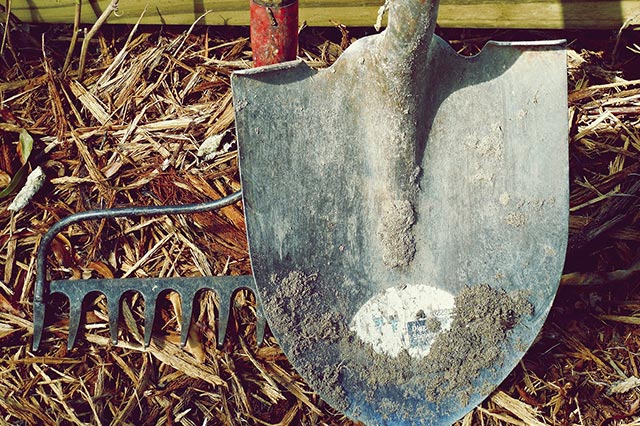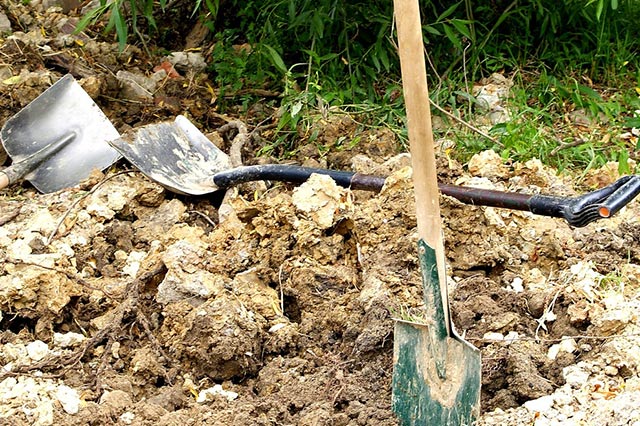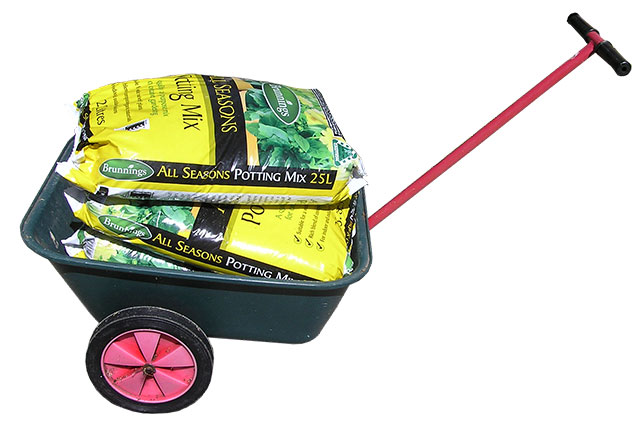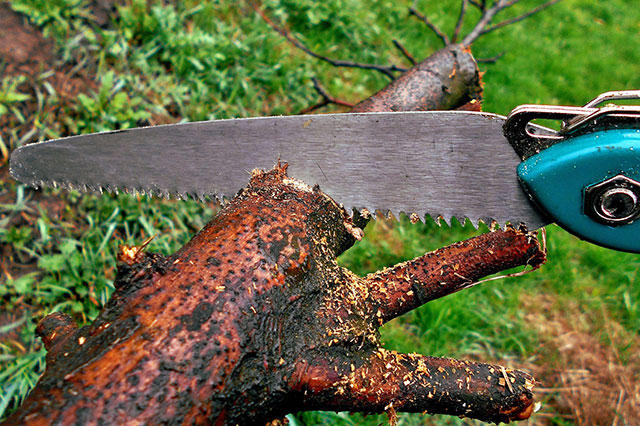Quit overworking, wasting unnecessary time, or not having the right tools to work most efficiently and maintain a stunning garden. Knowing which gardening tools to invest in can help you cultivate and keep a well-groomed garden in less time and with better results.

gardeninginfo-online.com gathered information on the tools that help you plant and grow a healthy, thriving garden.
Gardening Tools
When digging, pruning, raking, adjusting your soil, and harvesting, the following garden tools can help you get the job done with more efficiency and less exertion.
Garden Trowel – This tool is a small handheld shovel or spade. A garden trowel can have a wooden, plastic, or coated metal handle. The shovel part of this tool can be made of different metal or plastic. Sometimes the blade portion is coated or painted.
These handheld shovels come in different widths, generally up to five inches across. The width you select is a matter of preference and practicality, with certain widths better for specific jobs. Garden trowel blades may be flat, curved, or scoop-shaped.
Watch this video to see how a garden trowel is used.
Garden Weeder – A typical handheld weeder is small, roughly the size of a garden trowel, and has a very similar handle in size and shape. This tool has a long, thin metal pole that ends in two forking tines about 1 inch in length.
Weeders come in several shapes and sizes. Another common garden weeder has the appearance of a back scratcher with three or four curved claws and a longer handle to reduce the need to kneel.
Watch this video to see different types of garden weeders and how they’re used.
Rakes – You could say there are two different types of rakes:
- An iron rake (bow rake or garden rake) removes clumps or rocks, grooming, and smoothing soil or gravel. These rakes can be pulled or pushed.
- A leaf rake with flexible teeth for raking up leaves, and can only be used in one (pulling) direction.
You can find many sizes of rakes made from a variety of materials. Watch the following short video to see different types of rakes.
Shovels and Spades – Many use the terms “shovel” and “spade” interchangeably. However, they are very different tools.
Shovels have a larger, concave blade with a rounded or pointed tip and long handle. Used to dig, break up and/or turn soil.

Spades have a narrower, straight-edged, and nearly flat blade. This tool usually has a shorter handle with a “T” or “D” grip on the end and is used to slice through soil and roots.

Soil pH Meter – A soil pH meter is a simple tool that will let you know how acidic your soil is. In fact, it is vital to know your soil acidity level when trying to adjust the soil’s pH for new plants.
Many soil pH meters are “all-in-one” and will test your soil’s pH, moisture level, and light using a single device. Watch the following video to see a three-way meter in use.
Gardening Hand Truck, Utility Cart, or Wheelbarrow – When it comes time to move large amounts of soil, or heavy plants and small trees, a hand truck, wheelbarrow, or utility cart can save you from making multiple trips or risking injury by lifting too much weight.

Pruning Shears – Pruning shears, also called hand pruners, are a type of scissors for garden use. Pruning shears are strong enough to cut or prune hard branches of trees and shrubs, up to about an inch thick.
Two forms of pruning shears are bypass and anvil pruners. Bypass shears make fast, clean cuts, while anvil pruning shears crush while cutting.
Pruning shears should fit comfortably in your hand, open and close with ease, and remain sharp after extensive use.
Watch this informative video to see multiple types of pruning shears and their uses.
Loppers – Loppers are a type of heavy-duty scissors used for pruning twigs and small branches, like pruning shears with very long handles. Loppers also come with bypass (for stems and branches 1-inch in diameter and below) and anvil (for stems and branches larger than 1-inch) cutting mechanisms.
Watch this video to see the cutting power of loppers and the difference between bypass and anvil blades.
Handsaw/Pruning Saw – A handsaw or pruning saw has the same sharp teeth as saws used for woodworking or cutting lumber. However, pruning saws are for trimming larger shrubs and smaller trees.
When a stem or limb is under 1.5 inches, a pair of loppers can make quick work of it. Anything over 1.5 inches should be cut/pruned using a handsaw.

Gardening Tool Tips
When you are looking for garden tools, be aware of what you are buying. The following will help you know what to look for in your tools:
Material – The durability of your tools is mostly determined by the material they are made from. Consider the following:
- Plastics are relatively durable, lightweight, and easy to clean. However, plastic can easily break under repeated or heavy stress.
- Metal tools last for long periods but may rust without proper care.
- Wooden handles are common on metal tools but can dry out and crack over time.
- Both durability and longevity can be found in fiberglass handles.
Grip – When using a tool that doesn’t feel right or that you can’t keep sturdily in your hand, chances are, you won’t be using it very long. For tools used with repeated motion, handles may be cushioned to minimize blistering.
Effectiveness – Make sure that the gardening tools you acquire are appropriate for your garden’s size and state. Your tools should be sharp and clean, whenever used, to avoid damaging your plants, breaking your tools, or injuring yourself.
Note: Frequently sterilize your tools to avoid spreading harmful diseases from one plant to another.
Hand Tools for the Garden
In this article, you discovered information on the best garden tools to help you grow a healthy and well-pruned garden in less time, with less effort, but greater efficiency.
Knowing how to use your garden tools properly can keep your garden thriving throughout the year and make it an enjoyable experience for you.
Without the right gardening tools, you will struggle to finish the simplest of tasks or achieve any positive results, while reducing the health of your garden.
Sources:
extension.uga.edu/publications/detail.html?number=C1027-8&title=Stocking%20the%20Toolshed:%20Hand%20Tools
napamg.ucanr.edu/files/255106.pdf
safety.ucanr.edu/files/60533.pdf
The post Best Gardening Hand Tools appeared first on http://gardeninginfo-online.com.
No comments:
Post a Comment